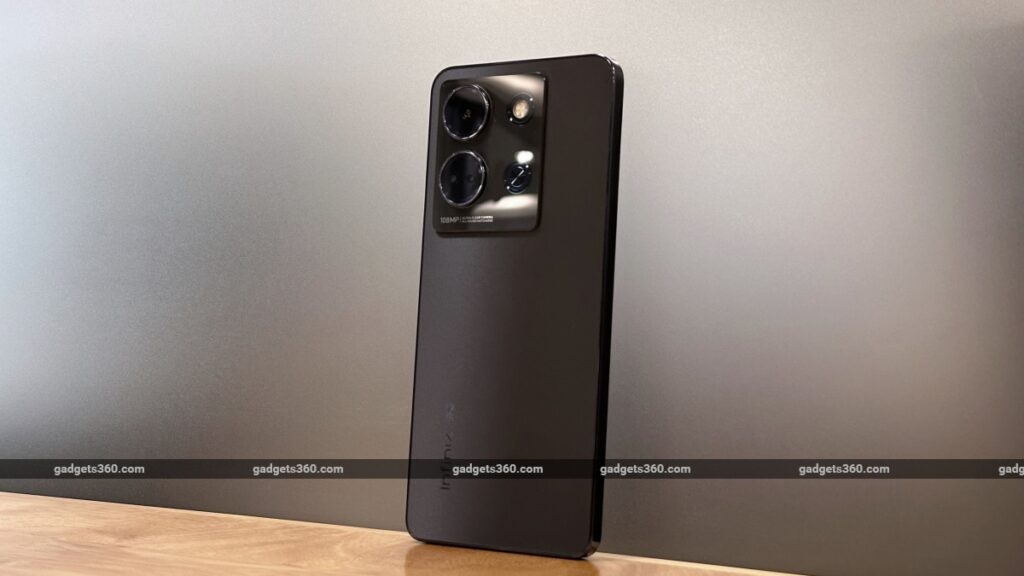Sub-Rs. 15,000 smartphone segments witnessed a kind of 5G awakening after the pandemic. Most manufacturers then rushed to release 5G-ready devices, but some managed to offer good value. The easiest trick in the book was to reduce the number or quality of cameras, so it soon became a challenge to get a decent camera at this price. However, 4G smartphones continued to be released, and this was mainly because most 4G devices in the segment seemed to offer unbeatable value, offering features such as splash protection, stereo speakers and more.
Although the “5G tax” has been gradually reduced over time, there are still some manufacturers such as Motorola and Realme that have recently announced new 4G devices, even though 5G services are already available in major cities.
Unfortunately, even some recently launched 4G devices like the Realme C55 didn’t make our list due to poor software performance. While we generally recommend buying a 5G smartphone as a way to future-proof your experience, we’ve still kept a few 4G smartphones on this list because most of the newer 5G devices we reviewed simply didn’t make the list.
So, here is our list of some of the best phones you can buy under Rs. 15,000 in India right now, in no particular order.
| Phones under Rs 15,000 | Rating of gadgets 360 (out of 10) | Price in India (as recommended) |
|---|---|---|
| Infinix Hot 30 5G | 8 | Rs 14,999 |
| iQoo Z6 Lite 5G | 8 | Rs 13,999 |
| Moto G52 | 8 | Rs 12,999 |
| Redmi 10 Prime | 8 | Rs 12,999 |
| Realme Narzo 30 5G | 8 | Rs 14,999 |
| Samsung Galaxy F22 | 8 | Rs 11,499 |
| Redmi Note 10S | 8 | Rs 14,999 |
Infinix Note 30 5G
The Infinix Note 30 5G can best be described as a jack of all trades. It’s one of the few recently launched 5G smartphones that not only offers good value, but also performs as expected. Priced from Rs.14,999 for the 4GB RAM model and Rs. 15,999 for the 8GB RAM model, this budget smartphone offers enough performance with the MediaTek Dimensity 6080 SoC for casual use and mid-level gaming.
The performance of the camera with a resolution of 108 megapixels is also not bad for its segment and allows you to create impressive still images both in daylight and in low light. There’s a 45W charger in the box that charges that big 5,000mAh battery pretty quickly. The phone is also IP53 rated. While all of the above sounds impressive for a budget smartphone, its bloated XOS 13 software, which also has a slight learning curve, may not be for everyone.
iQoo Z6 Lite 5G
iQoo Z6 Lite 5G offers reliable camera performance and a good design at an attractive price. As the name suggests, there are also 5G radios, although these are only two 5G bands. iQoo chose to use a 120Hz LCD display, which also makes this smartphone good for gaming. The combination of a Qualcomm Snapdragon 4 Gen 1 SoC and a large 5,000mAh battery also makes it good for entertainment, as the bottom speaker proved to be plenty loud in our testing. Although this phone seems to have the relevant markings, you should keep in mind that it does not come with a charger in the box. Also, its software is not the best in its class.
Moto G52
The Moto G52 does not have a 5G radio. This could be a problem for those looking forward to the transition to 5G networks. The G52 is intended exclusively for those who do not plan to switch to 5G immediately, but are more interested in value. With that in mind, the Motorola Moto G52 is focused on entertainment with a 90Hz pOLED display and stereo speakers with Dolby Atmos support. Qualcomm’s Snapdragon 680 processor isn’t an amazing beast, but it’s definitely up to par with day-to-day tasks (along with some light gaming), and that’s thanks in part to Motorola’s near-missing Android software. The phone also packs a large 5,000mAh battery and a 33W charger in the box. While the phone looks attractive, it’s also IP52 rated, which means it’s slightly dust and water resistant.
Redmi 10 Prime
The Redmi 10 Prime has a family look and is equipped with a large 6.5-inch Full HD+ display with a refresh rate of 90 Hz. It has a side-mounted fingerprint scanner, a plastic frame, and a quad-camera system at the back. This smartphone is powered by MediaTek Helio G88 SoC along with a large 6000mAh battery with 18W fast charging support. Camera performance in daylight is average despite the 50-megapixel primary camera. The image quality in low-light conditions is also a bit poor, which is one of the main downsides of this phone. While it doesn’t have the same impact as its predecessor, it offers better performance, so if that’s important to you, the Redmi 10 Prime will meet your needs.
We’ve also reviewed the Redmi 11 Prime 5G, which as its name suggests adds 5G to the mix, but you should only go for this one if 5G connectivity is high on your priority list.
Realme Narzo 30 5G
The Realme Narzo 30 5G is a slim and stylish 5G smartphone with a 90Hz display refresh rate, long battery life and average gaming performance. The cameras are a little disappointing for both photos and videos, and to make matters worse, there’s no ultra-wide camera. You get Realme UI and a few pre-installed apps that can send you unwanted notifications. This slim design surprisingly packs a 5,000mAh battery, but charging is a bit slower. However, if you want 5G and are on a budget, the Narzo 30 5G is a good phone to consider.
Samsung Galaxy F22
Samsung’s Galaxy F22 is a fairly basic budget smartphone with great battery life. It has a bright 6.4-inch 90Hz HD+ Super AMOLED display, but cuts everything else short. The large 6000 mAh battery easily lasts for two days, but takes a long time to charge. Camera performance is pretty average for its segment, but daylight video quality is good despite being limited to 1080p. The Galaxy F22’s design can best be described as practical, with a display that uses Gorilla Glass 5 for protection and a plastic one-piece body. The phone lacks the 5G radios available on the newer Galaxy F23 5G, but if a bright display and strong battery life are priorities, the Galaxy F22 fits the bill.
Redmi Note 10S
The Redmi Note 10S, despite being quite old, is still a solid offering in this segment. It was replaced by the Redmi Note 11S (which adds a 5G radio and a 108-megapixel primary camera), which costs more. As for the older device, it still packs a punch in terms of specs and is IP53 rated for dust and water resistance. There is a 6.43-inch AMOLED display with Corning Gorilla Glass 3. It has stereo speakers and an IR emitter, which are unusual for a budget smartphone. The Note 10S is powered by a MediaTek Helio G95 processor along with 6GB of RAM, and you can choose between 64GB and 128GB of storage. There are many pre-installed apps in your phone that send spam notifications from time to time. Xiaomi offers a quad-camera setup on the Redmi Note 10S with a 64-megapixel main sensor.


